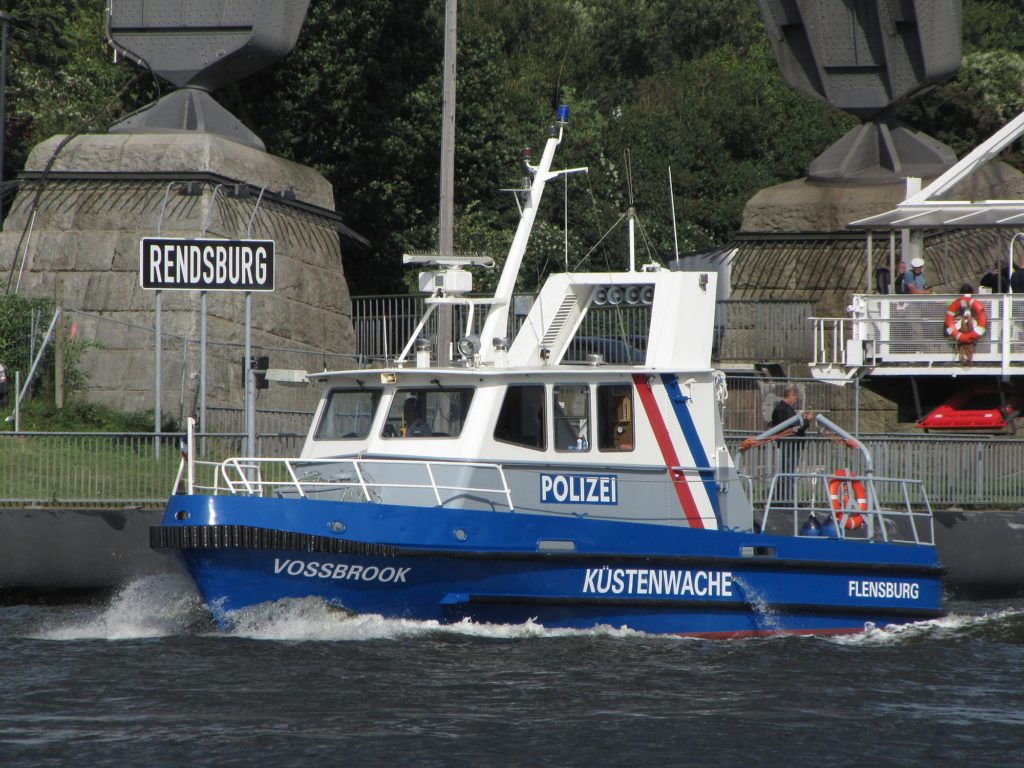The coast guard in Germany is a coordination network of several federal authorities.
History
As early as the beginning of the 1950s, the German Bundestag deliberated intensively, but unsuccessfully, on issues relating to a national coast guard to protect the German coasts.
The sea border protection, which was founded in 1951 and was supposed to take over some of the tasks of a coast guard, was transferred to the German Navy as early as 1956. Since general police tasks in the Federal Republic of Germany also fall under the jurisdiction of the respective countries at sea, the formation of a national coast guard has so far not been carried out.
However, the See Control Unit of the Federal Customs Administration was formed as early as 1950 and the Federal Border Guard (See) (now the Federal Police See) in 1964. In addition, the water protection police of the coastal states took on the tasks of a coast guard and are usually also on duty with the label Coast Guard.
Coast Guard coordination network
After the intended administrative agreement between the federal government and the federal states to create a joint coast guard failed, in 1994 the federal government effectively took over the entire new coast guard, including the financing, and founded the “Coast Guard Coordination Association”, which, according to the law, coordinates the federal authorities such as the federal police, customs and fisheries protection the common coat of arms Coast Guard operates. This creates the impression of the existence of a uniform German coast guard in the field, which in reality only exists as a loose coordination network of individual federal authorities. After the Pallas disaster in 1998, inadequacies in coordinating various security forces led to extensive political investigations and the establishment of the emergency command. In 2007, the Joint Situation Center See (GLZ See) started operations in Cuxhaven, which not only involves the federal government but also the coastal states.
Coast Guard of the State of Schleswig-Holstein
In addition to the Coast Guard coordination group, Schleswig-Holstein had an independent coast guard from the State of Schleswig-Holstein from 1995 until its dissolution at the end of 2005 as an association of the Water Police, the Office for Rural Areas (ALR) and the State Office for Nature and Environment. Since the consolidation of the competencies under a common roof at federal level finally failed due to resistance from other federal states, Schleswig-Holstein decided to dissolve this association. Ships of the water protection police of Schleswig-Holstein are also in use after 2005 with the label Coast Guard, as well as ships of the water protection police of other German coastal countries.

Tasks and responsibilities
The authorities involved agree on the deployment plan for the vehicles and control the current operations for the North and Baltic Seas in the See Situation Center of the Maritime Security Center Cuxhaven (MSZ). The Baltic Sea Coast Guard Center in Neustadt was dissolved. The general tasks of a coast guard in general are the security and control of maritime traffic (shipping police), for rescue in emergencies and disasters and for the prevention and prosecution of crimes in the territorial sea and on the high seas, such as monitoring fishing quotas. The maritime search and rescue service (SAR service) is operated in Germany by the German Society for Rescue of Shipwrecked People (DGzRS), which was founded in 1865 and is therefore not the main task of the coast guard. The ships of the coast guard in Germany are not part of the armed forces at sea, as in some other countries.
Regardless of this organization, the authority to issue instructions remains with the relevant authorities, namely the Federal Police, the water customs (main customs offices), the waterways and shipping offices and the Federal Agency for Agriculture and Food.
source: Wikipedia germany
Writer : CPO MaikeMia Sunato